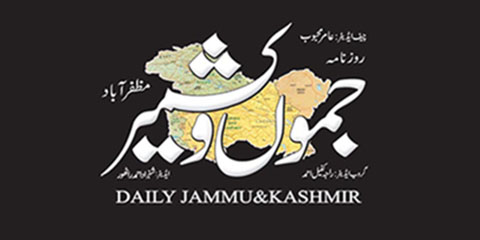JournalismPakistan.com | Published November 16, 2013 | Daud Malik
Join our WhatsApp channel
With hundreds of newspapers, TV channels and FM radio stations, Pakistani media today report everything under the sun – well almost everything. And there is no fear of being permanently closed down, save for financial reasons.
Everyone’s views get space in print and on the airwaves – from the maker of the car running on water to talks with TTP to serious looking experts calling each other ‘jahil’ while debating Malala’s book.
The heartrending stories of the young men going missing in Balochistan and being ‘found’ dead are also part of the media reporting today.
On the other hand the infighting between the media houses, the lament over every cricketing loss, the ever-increasing living cost and reports on fashion shows form part of our daily media circus.
However, there were times when reporting would lead to closing down of newspapers and arrests of editors.
On November 7, 2013 Dawn’s section that recalls news of 50 years ago said: Publication banned, editors arrested. The small news item on November 7, 1963 says the West Pakistan’s government banned the publication of Daily Kohistan for reporting a students’ demonstration. Apart from slapping two months ban, the Managing Editor, Sheikh Hamid Mahmud, and the Chief Editor, Nasim Hijazi, were arrested. The arrests, according to the news, were made under Section 16 of the West Pakistan Maintenance of Public Order, which came to be more known as MPO.
Born on 14 May 1914 in village Sojaanpur in East Punjab, as a prolific writer Nasim Hijazi (Mohammad Sharif) made a name for himself as author of romantic historical novels such as Akhari Chattan, Shaheen, Daastan-e-Mujahid, and those on the partition such as Khaak-o-Khoon.
However, in his book The Press in Chains, late Zamir Niazi gives another account of the closing down of the paper – an account which involved staff rivalries and efforts to take over the paper. Though the government said the action of closing down the paper was taken for the publication of false and baseless news, Niazi says: “In fact, there was more to it including the rivalries and differences in the staff.” Kohistan, according to Niazi, was a “widely circulated paper with a print order of 80,000 copies. Plans were afoot to bring out its Karachi edition as well.”
But at the same time trouble was brewing in the paper. Quoting Abdul Karim Abid, who was news editor of Kohistan’s Multan edition, there was a tussle going on between Nasim Hijazi and Enayatullah Khan over the issue of sharing profit with the employees. According to Abid, “Enayatullah’s stand was that the paper’s success was due to the efforts of the staff. Hence they should get their share in the profits which the paper was making. A majority of staff…supported Enayatullah. Their differences created a critical situation. Ultimately a strike notice on the management.”
According to Abid, Enayatullah was planning to bring out Mashriq but “before that he wanted to ruin Kohistan. Finally, Enayatullah , along with many others, left and started Mashriq.”
On November 7, 1963, the paper was banned for three months and the editor was arrested. Abid laments the loss of a paper which supported democratic forces in the country. For him, a conspiracy was planned to bring down a dynamic Urdu newspaper. “Since its policy was disliked by Governor Nawab Amir Mohammad Khan of Kalabagh, a conspiracy was hatched by some of the officials against the paper. The bureaucrats, who were close to the governor, helped Enayatullah.”
However, Abid thinks that Mashriq “dominated the field” and its success was “due to sheer hard work and efforts of Enayatullah and his capable team…”.
According to a thesis paper by Mumtaz Umar (http://prr.hec.gov.pk/Thesis/1773.pdf), Nasim started his journalistic career from Daily Hayat, and then joined Daily Zamana – both publications coming out from Karachi. Afterwards he joined Weekly Tanzeem, which was published from Quetta, and also became involved with Pakistan movement.
After partition, Nasim came to Rawalpindi to join Tameer, which he soon left to team up with Chaudhry Enayatullah to bring out their own newspaper – Kohistan – in 1953. Started from Rawalpindi, Kohistan soon became a popular newspaper, especially after it started its Lahore edition.
The thesis says, Kohistan was purchased by the Convention Muslim League (one of the many established by military rulers) but “at the end of Ayub Khan’s rule, this paper became the sole paper of Jamaat-e-Islami."
Nasim again joined the paper but the defeat of Jamaat in the 1970 General Elections led to Kohistan’s permanent close down.
(The writer is a senior journalist who has worked for The News and Dawn)

March 24, 2025: Explore the 10 critical reasons why Pakistan's legacy media continues to disappoint, from political bias and corporate influence to digital transition failures and unsustainable business models in Pakistani journalism.

September 07, 2024: Pakistani media is under fire for its lack of investigative reporting, political influence, and censorship. With talk shows becoming monotonous and biased, the public is turning to digital platforms for real news. Read on to learn how Pakistani journalism is failing its people.

July 11, 2024: Explore the challenges and opportunities expat journalists face in the UAE, with insights from Imran Naeem Ahmad, a former Gulf News journalist. Discover the impact of censorship, career prospects, and the reality of working for leading newspapers like Khaleej Times and Gulf News in Dubai.

July 09, 2024: Explore the profound impact of censorship on Pakistani journalism. Delve into the challenges faced by journalists, the erosion of press freedom, and broader societal implications in a country grappling with media restrictions and government control.

July 08, 2024: Discover the critical role of local news in a globalized world and how grassroots journalism empowers communities, ensures informed citizenship, and strengthens our societal fabric in the age of global connectivity.

July 06, 2024: Explore the challenges facing print media in Asia, from digital competition to financial struggles, and discover how newspapers and magazines are adapting to survive in the digital age.

July 03, 2024: Discover how independent media outlets in Asia are transforming journalism by breaking barriers and shaping public opinion. Learn about the challenges and triumphs of these new voices in the media landscape.

June 28, 2024: Dive into an extensive exploration of the ominous challenges besieging Pakistan's print media sector. Delve into the heart of the debate on whether traditional newspapers can withstand the onslaught of the digital revolution.

April 11, 2025 Sindhi journalist AD Shar was brutally murdered in Khairpur, Sindh. His body was found dumped on Handiyari Link Road. PFUJ has declared a three-day mourning period and demanded justice.

April 10, 2025 The Azad Jammu and Kashmir government has filed a case against The Daily Jammu & Kashmir and its staff for alleged fake news, drawing condemnation from PFUJ and IFJ, who demand immediate withdrawal of the FIR and an end to media repression in Pakistan.

April 08, 2025 Journalist Arzoo Kazmi alleges that Pakistan's state agencies, including the FIA, have blocked her CNIC, passport, and bank account while threatening her. She calls it a direct attack on journalism.

April 07, 2025 The Islamabad High Court has directed IG Islamabad to produce journalist Ahmad Noorani’s missing brothers, as the Ministry of Defence denies custody. SIM activity was traced in Bahawalpur, and investigations into their suspected abduction continue.

April 07, 2025 Journalist and Raftar founder Farhan Mallick has been granted bail by a Karachi court in a case concerning anti-state content aired on his YouTube channel. He still faces separate charges related to an alleged illegal call center and data theft.